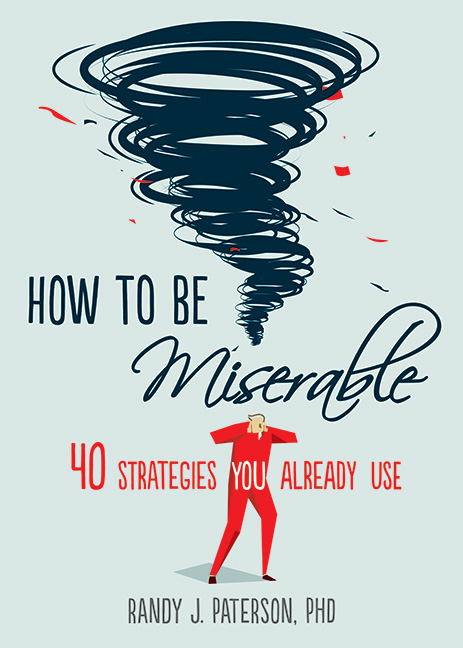By Randy J. Paterson, PhD
Many depressed clients have had extremely difficult lives, and are resistant to the notion that some of the problem may lie within their control. “I’m not TRYING to be depressed, you know!”
Lifestyle modification, behavioral activation, and cognitive self-examination can be touchy subjects for such clients. They are quick to feel needless blame for their problems, and are acutely conscious of the external forces—such as job losses, deaths, erratic parents—that have put them where they are.
It can be helpful to draw a clear dividing line between two sorts of risk factor. This can often best be done using a whiteboard, or on paper that the client can take home with them.
The first category we can call Column A—the items that are clearly and completely beyond the control of the individual: the electrical fire in the house last month, the accident that disabled their son, their genetic makeup, the sexual abuse that took place in childhood, etc.
Add to these all the things that the client might have avoided in the past but did not: the overconsumption of candy that may have contributed to adult-onset diabetes, the sedentary jobs, the bad choice of marriage partner, etc. These too are uncontrollable because your client does not own a time machine that would allow them to undo the past.
Don’t give short shrift to Column A—it is important to fully acknowledge these influences on the individual.
Column B is for all of the elements of the person’s current lifestyle that are at least theoretically under their own control: inactivity, isolation, negative thought patterns, poor sleep schedule, the pileup of paperwork, etc. A client may feel that they have no real control over these either, but they are at least somewhat amenable to their own efforts—providing that the uncontrollables of Column A are acknowledged.
The work on the elements of the two columns is very different. For Column A, you might work on acknowledgement, grieving losses, and acceptance. For Column B, you can gently introduce goal-setting and behavioral activation strategies, while acknowledging the difficulty of the path, and encouraging a focus on immediate steps rather than final victories.
If we simply dive into the work of changing the Column B items without acknowledging Column A, however, resistance is all but guaranteed.
Randy J. Paterson, PhD, is director of Changeways Clinic, a private psychology practice in Vancouver, BC, Canada. He is author of The Assertiveness Workbook and Your Depression Map, and conducts training programs for professionals on evidence-based treatment. His forthcoming book, How to Be Miserable, is now available.


 2024 Peace Playbook: 3 Tactics to Avoid Clashes with Your Partner
2024 Peace Playbook: 3 Tactics to Avoid Clashes with Your Partner